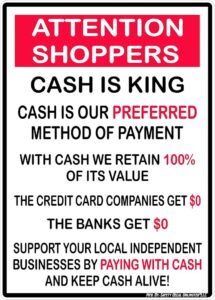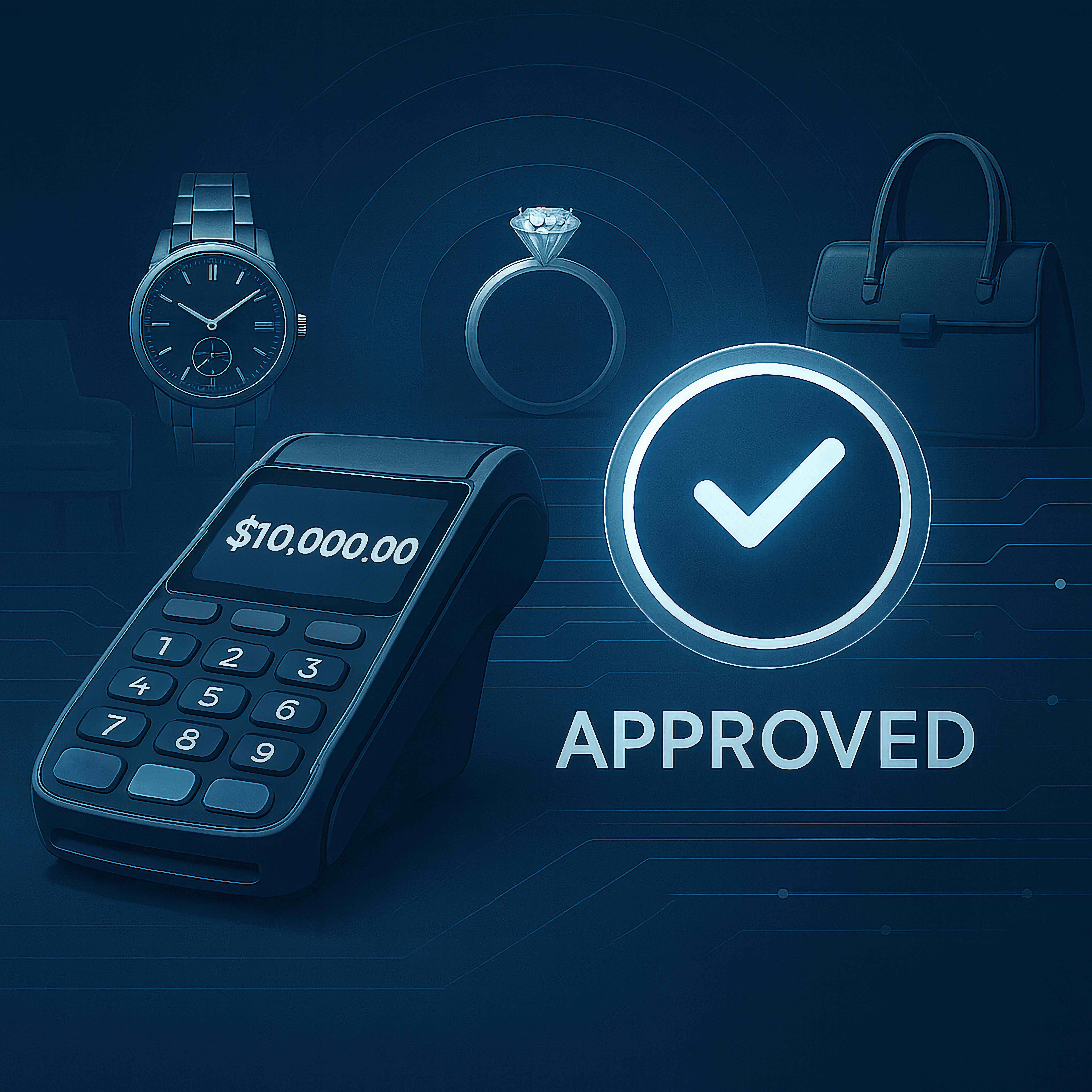Key Highlights
- Dual pricing, also known as cash discounting, offers lower prices for cash payments compared to credit card transactions.
- Customers pay for the processing fees, making it a zero cost transaction to merchants.
- This model benefits businesses by removing processing fees and customers by providing discounts.
- Dual pricing is legal across the U.S., differing from surcharging which has varying regulations.
- Clear signage and transparency are essential for implementation.
Introduction
In today’s competitive business landscape, dual pricing has emerged as an effective strategy for managing payment processing fees and enhancing customer satisfaction. This guide delves into what dual pricing is, how to implement it compliantly, and how VERIFIED Credit Card Processing can help you set up a dual pricing system.
Understanding Dual Pricing
Dual pricing is a model where businesses charge different prices based on the payment method. Typically, cash payments are offered at a lower price to offset the costs associated with credit card processing fees. The transactions for credit cards have all fees included and paid by the customer.
Definition and Importance
Dual pricing, or cash discounting, allows businesses to offer a lower price for cash transactions. This model help the businesses owner save on credit card processing fees and offers customers the benefit of lower prices when paying with cash.
How Dual Pricing Differs from Standard Pricing Models
Standard pricing models apply the same price regardless of payment method, often incorporating credit card processing fees into the overall price. Dual pricing differentiates by offering a lower cash price for cash payments, providing a clear incentive for customers to choose cash over credit. Also for the merchant it provides huge savings by getting to offload all processing fees.
Dual Pricing vs. Surcharging
While surcharging adds an extra fee for credit card payments, dual pricing offers a discount for cash payments. This distinction makes dual pricing more legally acceptable and appealing to customers.
Dual Pricing vs. Cash Discounting
Dual pricing and cash discounting are essentially the same, though the terms are used interchangeably. Both models aim to reduce credit card fees by encouraging cash payments and including the price of processing in the credit card price.
Importance of Dual Pricing Signage
Dual pricing signage plays a vital role in informing customers about their payment options and the differences between cash and card payments. Proper dual-pricing signage should clearly display both cash and card prices, using the phrase “cash is king” to highlight potential savings. This type of signage fosters transparency, helping customers understand the pricing structure while building trust.
Cash Price: The base price for cash payments.
Card Price: An adjusted price to cover credit card processing fees.
Clear dual pricing signage not only informs customers but highlights your commitment to transparency. Alongside signage, it’s essential that all staff are trained to confidently explain the differences in pricing. This ensures seamless communication and avoids misunderstandings at checkout. In a business environment, adopting the motto “cash is king” can encourage cash payments, helping both businesses and customers benefit from cost savings.
Designing Effective Dual-Pricing Signage
Clear and compliant dual pricing signage ensures customers can easily distinguish between cash and card prices. To maximize its impact, dual-pricing signage should feature large fonts, contrasting colors, and consistent placement throughout the store. This ensures customers are fully informed and can make decisions quickly. Coupled with proper staff training, this approach makes the dual pricing signage more effective.
Compliance and Staff Training for Dual Pricing Signage
Compliance goes beyond just the dual pricing signage itself. Staff should be trained to explain the pricing options to customers, emphasizing that the dual-pricing signage reflects a fair pricing model. Consistent monitoring of both signage and staff training will ensure compliance with all state and federal regulations.
The Advantages of Adopting Dual Pricing
Implementing a dual pricing program can lead to significant benefits, including cost savings and improved customer satisfaction.
Enhancing Customer Choice and Satisfaction
Dual pricing provides customers with the option to save money by paying with cash for the product or service, fostering transparency and trust.
Increasing Business Competitiveness
Offering lower prices for cash payments can attract more customers and give businesses a competitive edge. This strategy appeals to budget-conscious consumers who prefer to save money by paying with cash. Additionally, businesses can differentiate themselves from competitors by providing transparent pricing options, fostering trust and loyalty among customers.
By reducing reliance on credit card transactions, businesses can lower processing fees, enabling them to offer more competitive pricing overall. This not only increases customer satisfaction but also broadens the customer base, ultimately driving more sales and enhancing market presence.
Potential Savings
By reducing reliance on credit card payments, businesses can significantly lower processing fees and reinvest those savings into other areas of the business. Think of all the processing fees you have paid over the years and how dual-pricing allows you to stop paying any of them.
Navigating the Legal Landscape
Compliance with state and federal regulations is crucial for implementing dual pricing credit card processing without legal repercussions.
Compliance with State and Federal Regulations
Businesses must adhere to regulations requiring clear disclosure of dual pricing at the point of sale, ensuring customers are fully informed.
Key Legal Considerations for Businesses
Legal compliance involves transparent signage, reasonable price differences, and obtaining customer consent before transactions.
Implementing Dual Pricing in Your Business
To successfully implement dual pricing, businesses need to plan carefully, communicate effectively, and invest in appropriate resources. Below we offer a breakdown of aspects of dual pricing to consider to tell if it is right for your business.
Steps to Develop a Dual Pricing Strategy
- Analyze Current Pricing and Processing Fees: Understand your existing costs and identify opportunities for offering cash discounts.
- Study Customer Preferences: Gather insights into how your customers prefer to pay and their response to cash discounts.
- Consider Implementation Costs: Factor in expenses such as updating POS systems, creating signage, and staff training.
Best Practices for Transparent Pricing
Clear communication and transparency are key to successful dual pricing. Ensure customers are aware of pricing differences and the reasons behind them. Incentivize customers to pay with cash or debit card to minimize the cost of your merchant services.
How to Be Compliant with Dual Pricing
Compliance with dual pricing regulations is essential to avoid legal repercussions and build customer trust. Here are the steps to ensure compliance:
- Clear Signage: Display signs at the entrance, point of sale, and on menus, showing both cash and credit prices. Ensure the signs are easily visible, legible, and in plain language.
- Transparent Communication: Inform customers verbally about the dual pricing model at the point of sale. Ensure staff are trained to explain the pricing differences and answer any questions.
- Detailed Receipts: Provide receipts that clearly show the cash discount or credit card surcharge. This transparency helps in avoiding disputes and maintaining customer trust.
- Reasonable Price Differences: Ensure the price difference between cash and credit payments reflects actual payment processing costs and is not excessive.
- Customer Consent: Obtain clear consent from customers before completing the transaction, confirming they are aware of the dual pricing model and agree to the chosen payment method.
Practical Implementation Steps
Implementing dual pricing involves updating various business practices to ensure compliance and effectiveness.
-
Update Signage and Menus:
- Entrance Signage: Place signs at entry points informing customers about dual pricing. This helps set expectations before they make a purchase.
- Menu and Product Labeling: Clearly label all products and menu items with both cash and credit prices. This ensures transparency and avoids confusion.
- Point of Sale Signage: At the checkout counter, display clear signage that reiterates the dual pricing model. This final reminder helps ensure customers are fully informed before completing their purchase.
-
Train Staff:
- Inform and Educate: Train staff on the details of the dual pricing model, including how to explain it to customers and handle any questions or concerns.
- Role-Playing Scenarios: Conduct role-playing exercises to help staff practice explaining the dual pricing model in a friendly and informative manner.
- Regular Updates: Keep staff informed about any changes to the dual pricing policy or related regulations to ensure ongoing compliance and effective communication with customers.
-
Utilize Technology:
- POS System Integration: Ensure your POS system can handle dual pricing, automatically applying the correct price based on the payment method. The system should also be capable of showing cash and credit totals separately on the customer receipt if both payment types are used in one transaction.
- Mobile Payment Solutions: Implement mobile payment solutions that support dual pricing, allowing customers to see both prices and make informed payment choices.
- Regular Monitoring: Use technology to monitor transactions and ensure compliance with dual pricing regulations. Regularly review transaction data to identify and address any issues promptly.
Benefits of Using VERIFIED Credit Card Processing for Dual Pricing
Implementing dual pricing can be simplified with the help of VERIFIED Credit Card Processing. Here’s how we can assist:
- Comprehensive Solutions: VERIFIED Credit Card Processing offers a full suite of services, including terminals, mobile apps, and POS systems that support dual pricing.
- Expert Guidance: Our team provides detailed guidance on legal compliance and best practices for implementing dual pricing in your business.
- Ongoing Support: We offer continuous support to ensure your dual pricing model runs smoothly and effectively, helping you address any issues that arise.
Common Questions About Dual Pricing
What Are the Common Challenges of Dual Pricing?
The main challenges include legal compliance, clear communication, and potential customer resistance. Proper signage and staff training are crucial to mitigating these issues.
How Can Businesses Ensure Compliance with Dual Pricing Policies?
Consult legal experts, use clear signage, and train staff on dual pricing regulations to ensure compliance.
Is Dual Pricing the Same as Cash Discounting?
Yes, both terms refer to offering lower prices for cash payments to offset credit card processing fees.
What Are the Consequences of Non-Compliance with Dual Pricing Regulations?
Non-compliance can lead to legal penalties, fines, and damage to the business’s reputation.
How Does Dual Pricing Affect Customer Behavior?
Dual pricing may encourage customers to pay with cash instead of a credit card to save money. This can help businesses reduce the costs associated with card processing fees and improve their bottom line.
How Do Different Industries Utilize Dual Pricing Models?
Industries like gas stations and service sectors use dual pricing to manage operating costs and maintain competitive pricing while being transparent with customers.
What is Dual Pricing in Retail?
Dual pricing is a strategy where a business advertises two different prices for the same product or service: one for cash payments and another for credit or debit card payments. This strategy offsets card processing fees and incentivizes customers to use cash instead of a credit card.
Why Would a Business Consider Implementing Dual Pricing?
Businesses consider dual pricing to offset card processing fees and to be transparent about the costs associated with different payment methods. By offering a discount to customers who pay with cash, businesses can reduce their overall processing rate.
Is Dual Pricing Legal?
Dual pricing is legal, but businesses must comply with federal and state laws. It’s essential to check specific regulations in your area before adopting this pricing strategy.
What Are the Considerations Before Implementing Dual Pricing in My Business?
Before implementing dual pricing, ensure compliance with federal and state laws, assess your current processing rate, and evaluate how clearly you can communicate the dual pricing structure to customers.
Can Businesses Advertise the Credit Card Price More Prominently?
Yes, businesses can advertise the credit card price more prominently, but they must also clearly show the cash price to comply with legal requirements. Transparency is key for customers to understand the cost difference based on their payment method.
How Does Dual Pricing Benefit Merchants?
Dual pricing benefits merchants by reducing the impact of credit card rates on their profit margins. When customers pay with cash, merchants save on processing fees and if customers pay with card they pay the fees, which can significantly improve the business’s bottom line.
How Can VERIFIED Credit Card Processing Help with Dual Pricing?
VERIFIED Credit Card Processing offers comprehensive solutions, including terminals, mobile apps, and compliance assistance, ensuring a smooth transition to a dual pricing model. Apply today to learn more about maximizing the benefits of dual pricing.
Continue Reading
Let us discover your best options.
Either submit the form below or get in touch with an agent now (415) 835-4135.
Applying is risk-free; we send your details to underwriters to find the best fit and contact you with the best option or request more details, with no credit checks or commitments.













